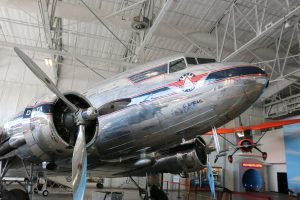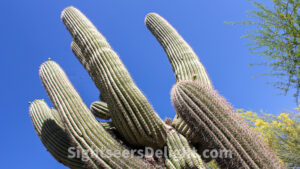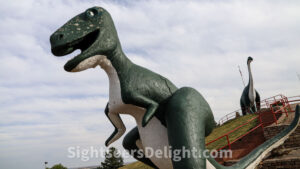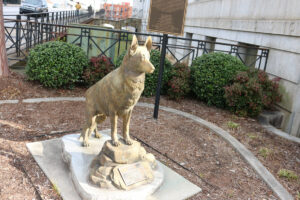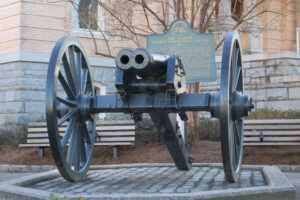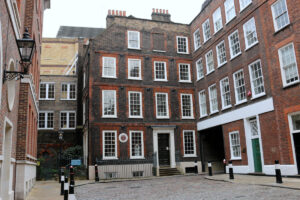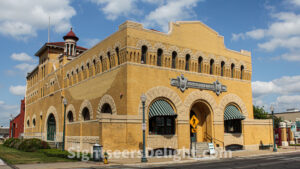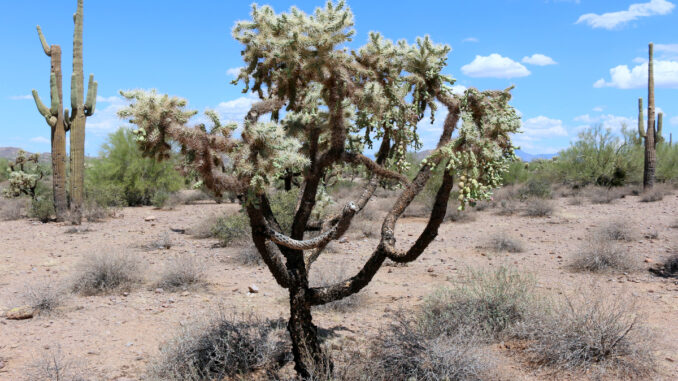
Guidebooks are annoying. Just because some editor who doesn’t know me tells me which restaurant is the best or what attraction is a must-see doesn’t make it a must-see attraction. Sightseers’ Delight is dedicated to the weird, the quirky and the fun. After all, traveling is fun.
If it’s not, you’re doing it wrong.
All of the places highlighted in this ever-growing database are great. Sightseers’ Delight has visited them all. We think you should make a point to see every one of them. But, this is not a guidebook. Just a webpage to help you plan your next adventure.
The Delta Flight Museum was established in 1995 and opened publicly in June 2014. Located in a pair of 1940s-era maintenance hangars, the museum is home fleet of rare vintage aircraft and artifacts from more than 40 airlines related to Delta. Among the artifacts is the Spirit of Delta, Delta’s first Boeing 767. Employees, retirees, and friends purchased and donated the plane to Delta in 1982.
30354
The Denison University Cemetery, also known as College Cemetery, was established in 1833 for presidents and professors who want to be interred on campus.
43023
The 140-acre Desert Botanical Garden was established in 1939 and is home to more than 21,000 flowers. Plants are on display along five thematic trails that cover a range of topics, including conservation, desert living and people of the Sonoran Desert.
85008
In the 1930s, work began on Rapid City’s quirky and beloved Dinosaur Park. The idea originated after dinosaur bones and footprints were found in the area. The goal was to convince travelers to Mount Rushmore to visit Rapid City, hoping to change the area from a pass-through town to a must-stop destination. Sculptor Emmet Sullivan and his team used metal pipe frames, wire and concrete to build dinosaurs. Many workers who helped carve Mount Rushmore were hired for the project. Officials initially selected five dinosaurs, but the group expanded to seven when two smaller dinosaurs were added near the gift shop. In the 1950s, the dinosaurs, originally painted gray, were given their green and white color scheme.
This solid bronze German Shepherd Dog DOGNY sculpture was dedicated on Sept. 11, 2013. The statue is part an American Kennel Club public art initiative. The project, “DOGNY: America’s Tribute to Search and Rescue Dogs,” honors the Canine Search and Rescue dog and handler teams who served following the Sept. 11, 2001, tragedy.
30303
Located off of Interstate 75 in Ocala, Florida, the Don Garlits Museum of Drag Racing features an amazing array of cars and vintage engines Garlits has rebuilt for display. Garlits’ impact on the sport is immeasurable. He was the first driver to officially surpass a number of speed marks, including hitting 270 mph on a quarter-mile track and 200 mph on a 1/8-mile track. Artifacts that help tell the story of drag racing’s history are featured throughout. Highlights include the Swamp Rat I, the car Garlits raced when he set his first world record; the Swamp Rat 14, the first rear engine car Garlits built; and the Swamp Rat 34.
34473
The Double-Barreled Cannon was the brainchild of Dr. John Gilleland, a dentist from Jackson County, Ga., and a member of Mitchell’s Thunderbolts. Built in 1862 at the Athens Foundry and Machine Works, the Double-Barreled Cannon is today little more than a bookmark in history and a rather unique relic. The cannon was designed to fire two cannonballs connected by a chain so as to “mow down the enemy somewhat as a scythe cuts wheat.” According one account, the cannon was tested on a site along Newton Bridge Road, but since the two barrels did not have the same range, the chain broke in mid-air. According to some sources, one of the cannon balls killed a cow in a field nearby. According to a number of sources, including books and newspaper accounts, the cannon was not used in battle. But, according to a Confederate Veteran article, the cannon was used during a skirmish, but not as originally designed.
Dr. Samuel Johnson wrote the dictionary. Literally. Between 1748 and 1759, Johnson paid a £30 rent, and while living in the house compiled his seminal work, A Dictionary of the English Language, published in 1755 and heralded as “one of the greatest single achievements of scholarship.” Wool merchant Richard Gough built the house during the latter half of the 17th century, and after Johnson moved out, the building was used for a number of purposes. The edifice was damaged during World War II, damage that can still be seen today.
The Dr Pepper Museum in downtown Waco is dedicated to telling not just the story of Dr Pepper, but the story of the entire soft drink industry. Charles Alderton who developed a unique combination of flavors in 1885 in Dr. Wade Morrison’s Old Corner Drug Store. The soft drink — which, according to legend, Morrison named after the father of a girl he once loved — quickly became known as a “Waco.” The museum is located in the former Artesian Manufacturing and Bottling Company building. Completed in 1906, the structure was the first building built specifically to bottle Dr Pepper and remained in use until the 1960s when operations moved to a facility with more room for canning. The building remained vacant for roughly two decades until 1985 — the centennial of Dr Pepper — when work started to convert the building into a museum. The museum officially opened to the public on May 11, 1991.
76701
Dry Tortugas National Park, situated about 68 miles west of Key West, preserves Fort Jefferson and the seven Dry Tortugas islands, the westernmost and most isolated Florida Keys. Fort Jefferson, a massive but unfinished coastal fortress, is the largest brick masonry structure in the Western Hemisphere and includes more than 16 million bricks. The park, accessible by seaplane and boat, is popular for its abundant sea life, tropical bird breeding grounds and colorful coral reefs. Dry Tortugas National Park is part of the Everglades & Dry Tortugas Biosphere Reserve, which UNESCO established in 1976 under its Man and the Biosphere Programme.

